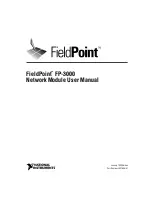
1 Product Overview
Quidway NetEngine20/20E
Configuration Guide - Basic Configurations
1-10
Huawei Proprietary and Confidential
Copyright © Huawei Technologies Co., Ltd.
Issue 05 (2010-01-30)
z
File System
z
SNMP Configuration
z
Terminal Services
z
High
z
Link Layer Protocols
z
IP
z
Unicast Routing Protocols
z
Multicast Routing Protocols
z
VPN Services
z
QoS
z
Security Features
1.3.1 File System
The NE20/20E provides rich file system functionality that can:
z
Facilitate your management over the files and directories in a storage device.
z
Support such operations as deleting a file, recovering a deleted file, clearing the files in
the recycle bin, displaying the contents of a file, renaming a file, copying a file, moving a
file, running batch processing files and displaying the information of a specified/private
file.
The NE20/20E supports file transmission service between remote hosts through FTP:
z
FTP Server service: You can log in to NE20/20E for file access by running the FTP client
program.
z
FTP Client service: You can log in to a router with a terminal emulation program or
Telnet and run certain FTP command to establish a connection with the remote FTP
Server to access the files on the remote host.
The NE20/20E can:
z
Support the TFTP-based file transmission to fit into the environments with simple
client-server interworking.
z
Support Xmodem-based file transmission that can be applied to the AUX port to support
128-byte packets and Cyclical Redundancy Check (CRC).
The HyperTerminal has the function to send files.
1.3.2 SNMP Configuration
The NE20/20E supports the Simple Network Management Protocol (SNMP), one of most
widely applied protocol on data communications networks, to do the following:
z
Transmit management information between any two points.
z
Makes it possible for an administrator to conduct information retrieval, information
modification, fault location, fault diagnosis, capacity planning and report generation on
any node of the network.
The SNMP Agent of the NE20/20E supports public MIBs prescribed by a series of RFCs and
those defined by Huawei so as to implement real-time monitoring over a great amount of
network devices. It has been widely applied and accepted by more and more customers.















































